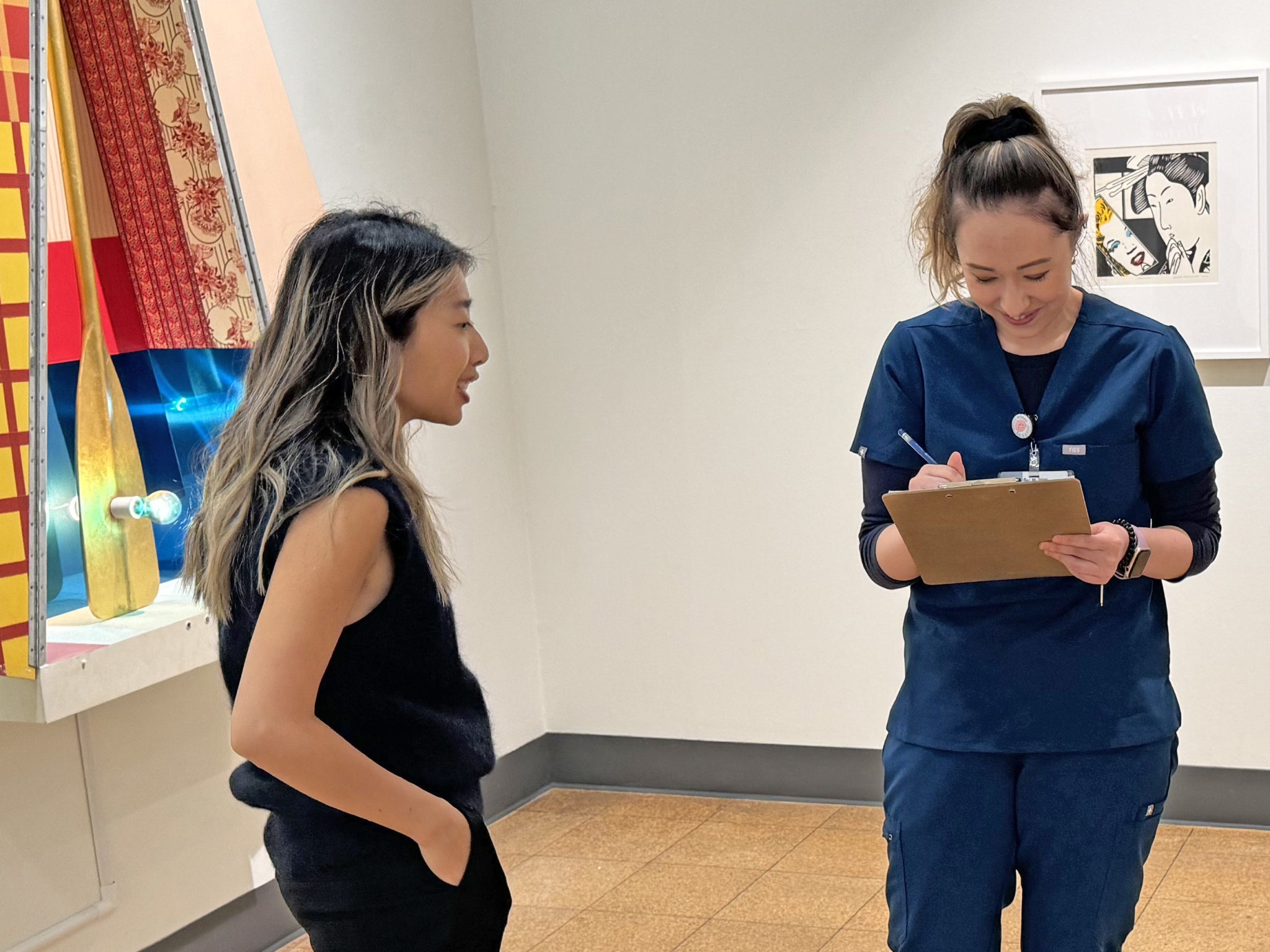For future physicians Sabrina Ferrari and Thomas Brower, getting the chance to analyze paintings and sketch one with their peers helped them see the importance of observation, interpretation, communication and empathy when treating patients.

During the last four weeks, over 100 first-year College of Medicine students engaged with art in an innovative medical humanities workshop at the University of Arizona Museum of Art — the brainchild of School of Art graduate student Amy Hu and UAMA assistant curator and alumna Willa Ahlschwede, who’ve co-led the sessions for the last three years.
“The workshop revealed to me the significance of never overlooking even a single detail about a patient,” Ferrari said, while Brower added, “it showed me how clear and effective communication with our patients can be crucial to building trust and improving health outcomes.”
That kind of feedback brings joy to Hu, a clinical assistant professor in Psychiatry and the director of Medical Humanities for the College of Medicine, as she pursues her M.A. in Art History. She helped start the workshops to show students “there’s no single way of practicing medicine.”
“There’s been a growing trend in medical education to utilize the humanities, but it’s really been more focused on narrative medicine,” Hu said. “There hasn’t been as much focus on utilizing the cultural arts, so I thought this is something that I really would like to explore.”
Hu is a graduate of the U of A psychiatry residency program. She received her medical degree from Indiana University, and her B.A. in Art History and a B.S. in Biology from Purdue.
At a recent workshop session, Hu prepped 20 medical students in the museum’s first-floor seminar room by talking about the late French historian and philosopher Michel Foucault. He developed the concept of “the medical gaze” — the act of selecting what is relevant from a patient’s story and body and filtering out what is considered irrelevant.
“Part of the work is thinking about how we look and perceive information, and all the things that may affect that process — our biases or prior experiences,” Hu told the students. “I want to encourage you all to become a little bit more aware of your subjectivity.”
Workshop co-leader Willa Ahlschwede (right) discusses Robert Colescott’s “Beauty Is Only Skin Deep” with students.
Moving to the museum’s second-floor gallery, Ahlschwede instructed the group to analyze two paintings: the surrealistic “Tenemos” (1980), an eerie, figural scene with animal imagery by Leonora Carrington; and the satirical “Beauty is Only Skin Deep” (1991), by the late Robert Colescott, a School of Art Regents professor whose garish works often referred to race and racism and pride and prejudice.
Students took a few minutes to quietly gaze at the paintings before discussing them as a group. “I appreciated having a moment of deep contemplation,” Ferrari said. “It made me realize how rare it is to replicate those moments when digesting new information from a patient. Oftentimes, there is so much background noise and other tabs open in our minds that take away from fully focusing on the person in front of us.”
In art, the meaning of a painting can be subjective, Ahlschwede told the future physicians. In medicine, she asked them, “Is there always a right answer with a patient or situation?” Most agreed every situation is different.

